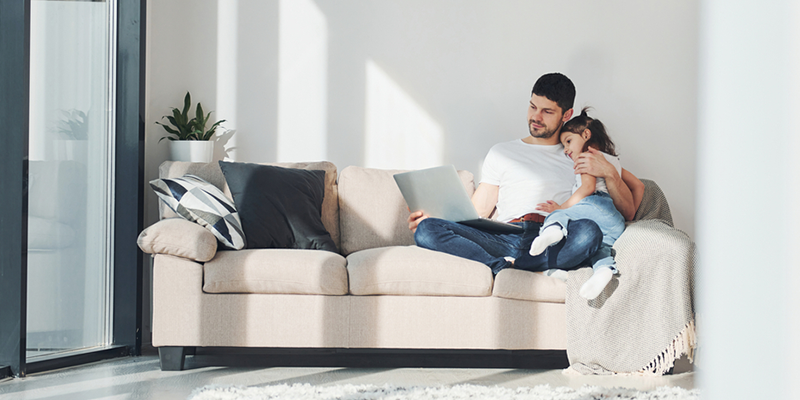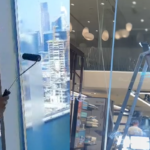
How Glass Heat Coating Cuts Heat Loss?
Heat loss and solar gain are crucial factors in how buildings perform. Heat loss occurs when warm air escapes, leading to higher energy costs and discomfort. On the other hand, solar gain happens when sunlight enters through windows, warming indoor spaces. Striking the right balance between these two elements is vital for maintaining a comfortable environment while minimizing energy use.
Energy efficiency is more important than ever. Modern architecture aims to create spaces that are not only pleasing but also sustainable. By using energy-efficient materials and designs, we can reduce our carbon footprint and save money on heating and cooling.
One effective solution for managing heat loss and solar gain is glass heat coating. This innovative technology enhances the performance of windows by reflecting unwanted heat while allowing natural light to enter. With glass heat coating, buildings can achieve optimal comfort and energy efficiency, making it a smart choice for both residential and commercial properties.
What is Glass Heat Coating?
Glass heat coating is a specialized layer applied to the surface of glass to improve its thermal performance. This coating helps control the amount of heat that passes through the glass, effectively reducing heat loss during colder months and managing solar gain in warmer seasons. By altering the glass’s reflective and absorptive properties, these coatings enhance energy efficiency in buildings.
There are several types of glass heat coatings, with the most common being low-emissivity (low-E) coatings. Low-E coatings are designed to reflect infrared light while allowing visible light to pass through. This means they keep indoor spaces warm in winter by reflecting heat back inside and reduce unwanted heat from sunlight during summer. Other types include solar control coatings, which are specifically formulated to minimize solar gain, and tinted coatings, which darken the glass and reduce glare.
The advantages of glass heat coating are significant. First and foremost, these coatings dramatically reduce heat loss, leading to lower energy bills and increased comfort. They also manage solar gain effectively, allowing natural light into the building while preventing excessive heat buildup. This balance helps maintain a stable indoor temperature year-round, reducing the need for heating and cooling systems. Additionally, glass heat coatings can enhance the overall aesthetic of a building, providing a modern look while contributing to energy efficiency.
How Glass Heat Coating Works?
Glass heat coating involves applying a thin layer to the glass that reflects infrared light, which is responsible for heat. In winter, this coating reflects warm air back inside, reducing heat loss, while in summer, it minimizes heat entry while allowing natural sunlight to come through. This dual action keeps indoor temperatures comfortable year-round.
Understanding thermal insulation and solar gain is key to grasping how this technology works. Thermal insulation helps keep warm air inside in winter and blocks heat in summer. Solar gain refers to the sunlight entering through windows. Glass heat coatings optimize this balance, enhancing energy efficiency.
In comparison to untreated glass, coated glass significantly reduces heat loss and excessive heat gain, resulting in lower energy bills and a smaller environmental footprint. This makes coated glass an ideal choice for modern building designs focused on comfort and efficiency.
Advantages of Heat-Resistant Glass Coating
Heat-resistant glass coating offers significant benefits by enhancing energy efficiency and reducing heating and cooling costs. Products like HeatCure’s transparent glass coating can lower room temperatures by over 9 degrees Celsius, cutting energy needs by more than 40%. This solution not only improves comfort but also contributes to a more sustainable environment.
Benefits:
- Energy Efficiency: Reduces heat loss and optimizes solar gain.
- Cost Savings: Lowers heating and cooling expenses significantly.
- Environmental Impact: Decreases carbon footprint through reduced energy consumption.
Glass Heat Coating vs. Traditional Methods
Here’s a comparison table highlighting Glass Heat Coating vs. Traditional Methods in terms of heat loss, solar gain, efficiency ratings, and performance metrics:
| Feature | Glass Heat Coating | Traditional Insulation/Glazing |
| Heat Loss | Reduces heat loss significantly, reflecting heat back inside. | High heat loss due to lack of reflective properties. |
| Solar Gain | Optimizes solar gain by allowing natural light while blocking excess heat. | Limited control over solar gain; often allows unwanted heat. |
| Efficiency Ratings | High efficiency, often rated with low-E values (e.g., U-value, SHGC). | Lower efficiency ratings; varies by insulation type and glass used. |
| Performance Metrics | Provides a stable indoor temperature, cutting energy costs by over 40%. | Performance varies widely; typically requires additional insulation to maintain comfort. |
| Comfort Level | Enhances comfort year-round, reducing reliance on HVAC systems. | May lead to discomfort due to temperature fluctuations. |
| Aesthetic Appeal | Maintains transparency and aesthetics while improving efficiency. | May require bulky installations or modifications that affect appearance. |
Applications of Glass Heat Coating in Building Design
- Residential Benefits: Homeowners gain increased comfort and energy savings by minimizing heat loss and optimizing solar gain, leading to lower energy bills.
- Commercial Use Cases: In commercial buildings, glass heat coatings enhance energy efficiency while adding a modern aesthetic, creating inviting spaces that appeal to clients and employees.
- Architectural Trends: Glass heat coatings align with contemporary architectural designs, allowing designers to leverage natural light without sacrificing temperature control, making them essential for sustainable and attractive building solutions.
Read more: Top UV Protection in Noida: Protect Your Home with Heatcure
Conclusion
In summary, glass heat coating offers dual benefits by effectively reducing heat loss while managing solar gain. This innovative solution enhances energy efficiency, keeping indoor spaces comfortable throughout the year. Homeowners can enjoy lower energy bills and a cozy environment, while commercial buildings can achieve both aesthetic appeal and sustainability.
If you’re considering ways to improve your building’s performance, glass heat coating is a smart choice. It not only contributes to a stable indoor climate but also aligns with modern architectural trends, making it an attractive option for any property.
Ready to elevate your space? Contact the HeatCure Team today to learn more about how glass heat coating can transform your building’s energy efficiency and comfort. Let us help you make a positive impact on your energy consumption and the environment!



Comment (0)